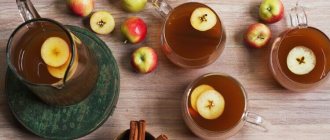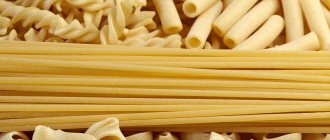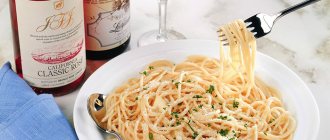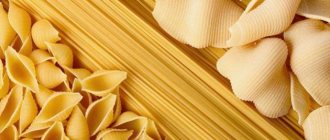I decided to look at the table. Compare what I eat... but that's not the point. What I saw shocked me)) Food calorie table: side dishes
Pasta 330
polished rice 368
mashed potatoes 54
potato dumplings 106
French fries 252
How can it be that French fries have less calories than rice? Usually rice is recommended for weight loss)) and even the same pasta has less calories than rice?? They are contraindicated for weight loss)) What about purees? Is it really that low in calories? Just tell me that this is the wrong table))
Everyone has already said about rice and potatoes, but pasta should have been excluded from taboo foods for a long time. No, of course you should still eat them very carefully. But if the pasta you bought is made from durum wheat, then it is completely fine, it is digested and fermented properly, without adding unnecessary weight - if you eat properly.
Sokolla And about French fries, they have more calories than in your table. about 350-400, it is fried in a huge amount of oil. Moreover, it initially arrives frozen, that is, already killed in the trash.
People who monitor their weight and health try to rationally approach the selection of products for their daily menu. Everyone, without exception, knows about the need to consume a large portion of vegetables and fruits every day, as well as a fair share of proteins (meat, dairy products). But what to do with the side dish? Can I eat potatoes and my favorite pasta or will I have to give up something? Let's try to find out which has more calories: potatoes or pasta.
Which is healthier?
First, you need to figure out which of these products has greater benefits for our body. Where there are more nutrients and vitamins.
At first glance, potatoes But those who think so are deeply mistaken. This root vegetable is a real storehouse of useful micro and macroelements. It is no coincidence that it has been used as a medicine since ancient times. Even today in folk medicine you can find many recipes using it. For example, potato juice is very beneficial for the stomach and is recommended for use for gastritis and ulcers.
This root vegetable contains potassium, magnesium, phosphorus, manganese, copper, large amounts of vitamin C, B6 and even nicotinic and caffeic acids. Those who regularly consume this product are less likely to suffer from cardiovascular diseases. The presence of the rare compound kukoamines in it makes it beneficial for people with high blood pressure. Due to its high dietary fiber content, this product can prevent intestinal cancer and reduce the level of bad cholesterol in the blood.
When buying pasta , choose durum wheat. Because products made from soft varieties do not provide any benefit to the body.
Which has more calories, potatoes or pasta?
What has more calories: pasta or potatoes?
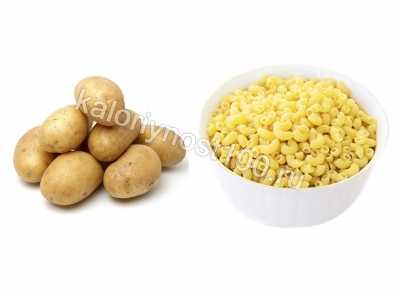
People who monitor their weight and health try to rationally approach the selection of products for their daily menu. Everyone, without exception, knows about the need to consume a large portion of vegetables and fruits every day, as well as a fair share of proteins (meat, dairy products). But what to do with the side dish? Can I eat potatoes and my favorite pasta or will I have to give up something? Let's try to find out which has more calories: potatoes or pasta.
Which is healthier?
First, you need to figure out which of these products has greater benefits for our body. Where there are more nutrients and vitamins.
At first glance, potatoes But those who think so are deeply mistaken. This root vegetable is a real storehouse of useful micro and macroelements. It is no coincidence that it has been used as a medicine since ancient times. Even today in folk medicine you can find many recipes using it. For example, potato juice is very beneficial for the stomach and is recommended for use for gastritis and ulcers.
This root vegetable contains potassium, magnesium, phosphorus, manganese, copper, large amounts of vitamin C, B6 and even nicotinic and caffeic acids. Those who regularly consume this product are less likely to suffer from cardiovascular diseases. The presence of the rare compound kukoamines in it makes it beneficial for people with high blood pressure. Due to its high dietary fiber content, this product can prevent intestinal cancer and reduce the level of bad cholesterol in the blood.
When buying pasta , choose durum wheat. Because products made from soft varieties do not provide any benefit to the body.
The durum product contains a lot of nutrients. Namely: B-group vitamins, pantothenic and folic acids, thiamine, pyridoxine, niacin. Such pasta also contains dietary fiber of plant origin, tocopherol, betocaratine, and vitamins PP. Just so that these beneficial substances are not destroyed during the cooking process, the pasta must be slightly undercooked. Then they will not lead to excess weight gain, but will only bring benefits and heal the body. After all, the fiber they contain acts as a brush and helps to completely cleanse the intestinal walls of accumulated harmful deposits. B vitamins strengthen the nervous system, help fight stress, and tryptophan improves and improves mood.
As you can see, each of these products can benefit the body. Therefore, it is important that both are included in the diet.
Which is more harmful?
A contraindication to eating pasta may be gluten intolerance. Such people are recommended to use them very rarely and limitedly, depending on the degree of the disease.
As for potatoes , it is worth remembering that they have a high glycemic index. Everyone who suffers from diabetes knows this. Therefore, for people with this disease, doctors recommend either completely eliminating it from the diet or consuming it in moderation and soaking it in water before cooking.
The nutritional value
The nutritional value of potatoes will vary depending on the variety, but the average values per 100g are as follows:
- Proteins – 2 g
- Fat – 0 g
- Carbohydrates – 16 g
- Calorie content – 77 kcal
Nutritional value of soft wheat pasta:
- Proteins – 6 g
- Fat – 1 g
- Carbohydrates – 31 g
- Calorie content – 157 kcal
From all of the above, it is clear that potatoes are more dietary and low-calorie than pasta. But in any case, the main thing during a diet is variety. Therefore, you should not completely exclude any of these products. You just need to know when to stop and try to take their caloric content into account when creating a menu. Supplement spaghetti with, for example, vegetables or tomato-based sauce.
Fried or mashed potatoes - which is healthier for your figure? How the calorie content of foods changes depending on how they are prepared
Give up pasta and potatoes for the sake of a beautiful figure? Can. But is it necessary to radically change your diet if you can simply change the way you prepare your favorite foods, reducing their calorie content?
It turns out that depending on how a dish is prepared, it depends on how safe it is for a beautiful figure. The authors of the Adme.ru portal compared the calorie content of the same product prepared in different ways.
Mashed potatoes, baked and fried
Boiling potatoes increases their calorie content by about 30% due to the starch in their composition. It is recommended to slightly undercook the vegetable or even bake it in the oven. When frying, potatoes absorb oil, which increases their calorie content, and such a dish can no longer be called healthy.

Corn porridge and corn flakes
Corn grits are used to prepare both dishes. But due to a special production process and additives, the flakes contain several times more calories and sugar than regular corn porridge, and are therefore considered less healthy.

Roast beef and grilled steak
Beef can be included in the diet menu if you know how to cook it: roast beef baked in the oven contains much less calories than boiled chicken and especially fatty steak, even if you cook it on the grill.
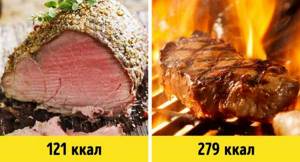
Chicken boiled, grilled and fried
Chicken contains the same amount of calories whether it is boiled or grilled. But when frying, meat absorbs some of the oil and because of this it becomes more caloric and less healthy. If you're counting calories, don't eat leather.
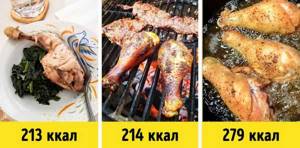
Fried and lightly salted salmon
Lightly salted salmon is very high in calories, although this largely depends on the salting method. It is not recommended to be eaten frequently by people who follow a healthy diet. It is better to bake the fish in the oven or grill it.

Cauliflower boiled and fried
To get the maximum benefit, cauliflower, like broccoli, is best steamed. Stewing actually kills the vegetable, and frying also increases the calorie content because the florets absorb oil.
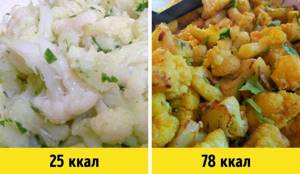
Pasta before and after cooking
The packaging always indicates the calorie content of dry pasta, approximately 330–380 kcal per 100 g. This figure decreases by 2–3 times when you cook it. But they usually get better not from pasta, but from the sauces with which they are served.
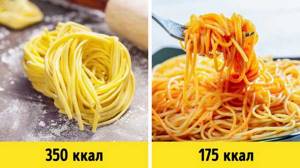
Steamed and fried zucchini
The calorie content of zucchini varies depending on the cooking method. Like mushrooms or eggplant, zucchini absorbs oil when fried and becomes greasy, losing all its vitamins. It is better to steam it or, in extreme cases, lightly grill it.
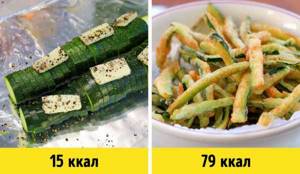
Fried, omelette and boiled egg
The calorie content of a boiled egg is less compared to a fried one. But, if you care about your figure and want to get the most out of this product, try a steamed omelette made with milk and 2 eggs.
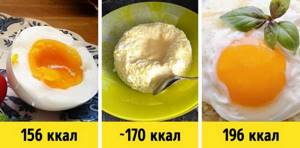
Cocoa and homemade hot chocolate
Cocoa, when diluted with water and milk, is a lower-calorie version of hot chocolate. The main thing is to prepare both drinks without additives, use good dark chocolate and whole milk.

Dairy ice cream in a cone or on a stick
Without additives, the calorie content of milk ice cream is 126 kcal per 100 g. This figure will increase if it is served in a waffle cone or chocolate glaze, and also if the dessert is made with cream instead of milk.
Pasta versus potatoes: who wins?
Carbohydrates are an important part of a complete diet. Which products are their best source can be debated at the level of national cuisines. Let's try to look at this issue from the perspective of Italy versus Russia, or, to put it simply, pasta versus potatoes.

Carbohydrates, depending on the rate of absorption, are divided into fast and slow. Fast carbohydrates are all sweets: glucose, fructose, sucrose. They cause a rise in blood sugar and insulin and quickly turn into fats. Slow carbohydrates (starches), found in pasta, potatoes, cereals, bread, do not create sugar spikes and are the highest quality and correct “fuel” for us. But besides the carbohydrates in pasta and potatoes, there are other variables that affect the body in one way or another. Therefore, we will weigh the pros and cons.
Health benefit or harm?
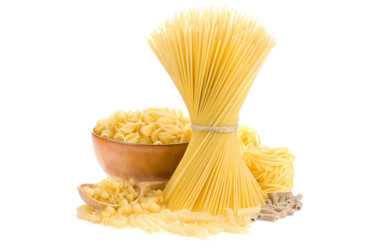
Pasta made from durum wheat indirectly helps to cope with stress and headaches caused by the modern rhythm of life. This is due to the presence of B vitamins in the product. And in moments when you feel sad and want something sweet, pasta can be a good alternative to chocolate. They, like the popular sweet, contain the amino acid tryptophan. Turning into serotonin, it lifts your mood. In addition, pasta
products contain vitamin E (tocopherol) - the most famous antioxidant that prevents cell destruction, it protects them from damage, slows down the aging process, and prevents the appearance of wrinkles. Those who regularly consume pasta do not have to worry about cardiovascular diseases: complex carbohydrates lower blood cholesterol levels. And a large amount of fiber improves intestinal function.
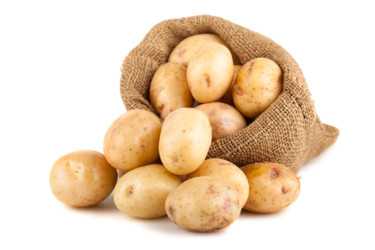
Potatoes contain a lot of potassium and have a pronounced decongestant effect. Potato fasting days are often recommended for people with edematous syndrome. It, like pasta, contains a lot of fiber and B vitamins. In addition to potassium, potatoes are rich in other minerals - calcium, magnesium, phosphorus, iron. And also vitamin C, an antioxidant that takes part in
all redox processes in the body - one medium-sized potato contains about half of the recommended daily intake (although half of it is destroyed during heat treatment). We also get a large amount of protein from potatoes (about 2.1% of the original weight of fresh potatoes) and beta-carotene (provitamin A).
Conclusion: Pasta wins in terms of vitamin E content, but, unlike potatoes, it does not contain vitamin C at all. If we evaluate how many nutrients we get per serving (200 g) of one and another product, potatoes come out on top. It has a higher saturation of minerals and vitamins.
What won't harm your figure?
Elena Tikhomirova, nutritionist at SM Clinic, member of the National Association of Dietitians and Nutritionists:
“Potatoes or pasta? The answer is simple - both! Those who are losing weight should not be afraid of these products. Starches, combined with proteins and fiber, provide a long-lasting feeling of fullness. It's all about the quantity and time of consumption. Since these are carbohydrates, they are best eaten for breakfast or lunch.”

The amino acid tryptophan contained in pasta not only improves mood, but also regulates appetite. Fiber, an indigestible carbohydrate of plant origin, helps cleanse the body. It is not digested or absorbed, unlike light carbohydrates and starch. Its volume irritates the intestines and accelerates peristalsis, reducing the absorption of fats, carbohydrates and proteins. Serves as food
intestinal microflora. Absorbs heavy metal salts and bile acids. Yes, dry pasta contains about 330 kcal per 100 g, this figure is often scary, but many do not take into account that boiled pasta contains about 100 kcal and about 28.2 g of carbohydrates per 100 grams of the finished dish.

Potatoes also contain a lot of fiber. As for caloric content, per 100 g of boiled product there are from 80 to 100 kcal and about 16 g of carbohydrates. But this information is relevant for young potatoes. In the old one, complex carbohydrates, breaking down, turn into simple ones. This is why old potatoes are sweet. You shouldn’t give it preference if you don’t want to add a few centimeters to your waist.
Conclusion: When considering these products in the context of benefits for the figure, it is wrong to say that any of them is better. It's a sure draw here. It all depends on how long the heat treatment of the products takes place. During long cooking, starch is hydrolyzed and complex carbohydrates are converted into simple ones. This is why al dente pasta, cooked until half cooked, is much healthier than overcooked pasta. And steamed or boiled potatoes are much healthier than those that simmer for hours on the stove or in the oven.
Subtleties of gastronomy
We examined the products under ideal conditions: welded, without adding any other components. Indeed, both pasta and potatoes have many benefits for the body. But everything changes when they arrive: oil, fats, sauces!
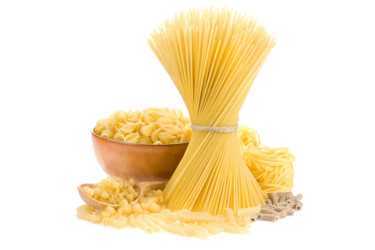
Healthy: Pasta cooked until al dente. Served with vegetable sauce or vegetables, skinny fish, seafood or skinless chicken breast.
You should not eat: pasta fried in vegetable oil* after cooking, as well as in combination with meat, creamy sauces or seasoned with vegetable oil.
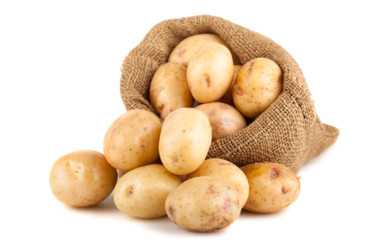
Healthy: Potatoes, boiled or baked in their skins. If you cook potatoes without skins, some of the potassium goes into the broth; steamed potatoes; mashed potatoes with water. Combine with vegetables, herbs, seafood, skinless chicken breast.
You should not eat: potatoes fried in vegetable oil* in a frying pan. A combination of potatoes, including boiled ones, with heavy meat.
Harmful! French fries and chips. Frying fats used to fry these foods have an extremely negative impact on health. They lead to an excess of saturated fatty acids in the human diet, increasing the risk of heart and vascular diseases. Consumption of such products often leads to obesity. As a result of frying, various carcinogens are formed in foods. A large amount of salt retains excess fluid in the body and is a risk factor for hypertension.
*One tablespoon of vegetable oil contains 100 kilocalories. In principle, it is beneficial for the body in itself, but in the process of heating the oil in a frying pan, the double bonds of unsaturated fatty acids are oxidized, which completely deprives the product of its benefits, turning it into harm.
Conclusion: Despite all the benefits of these two products, if prepared incorrectly, they can be harmful to health. At this point, potatoes gain penalty points and give way to pasta. It is loved and prepared precisely in those forms that “hit” health the hardest.
Pasta, rice and potatoes help you lose weight, scientists say
Not all carbohydrates are equally harmful for weight loss, scientists say. Those who want to lose weight, as a rule, exclude starch and sugar from the diet, as they quickly turn into glucose, which causes insulin levels in the body to rise, and this, in turn, inhibits fat burning. However, studies of the so-called resistant starch prove that it not only does not interfere with, but also promotes weight loss, since it contains fiber and many nutrients.
Resistant starch is not digested in the small intestine, but when it enters the large intestine, it nourishes the flora and promotes the production of short fatty acids that stabilize blood sugar levels. In addition, the fiber it contains cleanses the body.
As several studies conducted in recent decades have shown, such starch improves heart health and digestion, and prevents the development of gastrointestinal diseases. All these studies were brought together by the British Nutrition Foundation, which responsibly states: fiber, which is contained, including in starch, must be taken on average 30 grams per day to reduce the risk of a number of chronic diseases.
The Spanish newspaper La Vanguardia offers a list of products that contain resistant starch in its natural form.
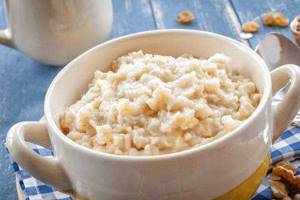
Oatmeal and rice
. The best way to prepare oatmeal to maximize the benefits of resistant starch is to cook it and refrigerate it for a few days. Or make “lazy oatmeal”: soak it in water or kefir and also leave it to brew. It is also better to cook rice a week in advance, the main thing is to make sure that it does not rot or dry out.
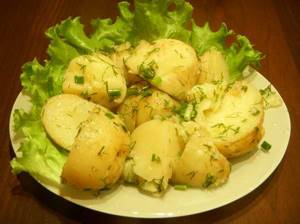
Potato
. Regular potatoes or sweet potatoes should be cooked, then cooled and reheated. This technique is believed to work with other carbohydrate foods as well.
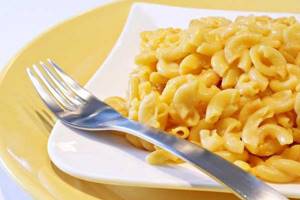
Pasta
. They are also useful for weight loss. They too should be cooled and reheated after cooking rather than eaten straight away, according to research from the British Foundation.
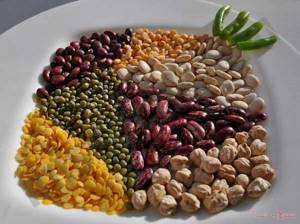
Vegetables and legumes
. This food has long been known for its richness in fiber, but it also contains no less resistant starch: for every 100 grams of vegetables there are 3-4 grams of the beneficial substance. For maximum benefit, they should be eaten ripe and hot.

Green bananas
. They are also rich in fiber and resistant starch, as well as vitamins C and B6. It's best to buy them while they're green, but keep them at home for a few more days before eating them.
Recommendations
Please note that rice must be cooked correctly as many nutrients as possible remain in it . To do this, you must strictly observe the amount of water during cooking, and also do not forget to rinse the cereal before or after cooking. If everything is done according to the recipe and consumed in moderation, the dish will have a beneficial effect on the metabolism of people who are losing weight or suffering from gastritis, ulcers, kidney disease, or hypertension. Rice is an aid to digestion . It improves intestinal microflora and eliminates toxins. By the way, children begin to give it as complementary food earlier than pasta, from about six months.
You should always remember about contraindications for those who are sick with any disease, otherwise these dishes rich in beneficial properties will only bring harm.
It is best for the human body to alternate rice and pasta in your diet, as well as use other foods to support vital functions, such as vegetables and fruits.
Rice, bread and pasta in a weight loss diet
Many slim people think that carbohydrate-rich foods like pasta, bread, potatoes, cereals and rice are the bad guys when it comes to losing weight—and the popularity of low-carb diets a few years ago did little to dispel this myth.
Additionally, it is common to read that wheat, found in foods such as bread and pasta, can cause bloating, leading many of us to believe that eliminating them from our diet will help us lose weight.
Because of this, many people are confused about whether they should include high-carb foods in their diet for weight loss.
What's the truth about carbohydrates?
Most health experts agree that there is no evidence that high-carbohydrate foods are any more likely to cause weight gain than any other food. After all, it's excess calories that cause us to gain weight—and it doesn't really matter where those extra calories come from.
In fact, it's usually the fat we add to carbohydrates that adds calories, such as butter on potatoes or jacket bread, creamy pasta sauces and fried rice.
Carb-reducing diets work wonders like any other diet - by reducing calories.
If a diet restricts certain foods such as bread, potatoes, pasta, grains and rice, it also restricts calories, which causes weight loss.
Most carbohydrate-rich foods, especially unprocessed foods such as wholemeal bread, wholemeal cereals, wholegrain pasta, brown rice and jacket potatoes, are low in fat and contain a wide range of vitamins and minerals and make an important contribution to fiber intake.
By avoiding such carbohydrates, it becomes increasingly difficult to get the recommended 18 grams of fiber per day that we need for a healthy digestive system and help reduce the risk of conditions such as constipation, hemorrhoids (piles), diverticular disease and possibly even bowel disease. cancer.
And, of course, high-fiber foods help fill us up, which is why they're so great for weight loss.
There is also strong evidence that whole grains, which are typically found in high-carbohydrate foods such as whole grain cereals, whole grain pasta, brown rice and oats, have a range of health benefits, including supporting heart and digestive health and help us control our weight and blood sugar levels.
A diet that excludes these foods makes it difficult to eat the three daily servings of whole grains recommended by most health experts.
What carbohydrates should I eat?
Choose high-fiber carbohydrates such as brown rice, whole grain cereals, whole grain bread, potatoes with their skins on, and whole grain pasta. They contain more nutrients and fiber than processed "white" varieties and will therefore help fill you up.
Don't add too much extra fat to them, for example serve pasta with tomato sauce rather than butter, and top jacket potatoes with cottage cheese rather than cheddar. And limit your intake of carbohydrates in combination with large amounts of fat, such as crisps, crisps and fried bread.
How much should you eat to lose weight?
The Eatwell label from the Food Standards Agency suggests that carbohydrates should make up around a third of the food we eat. Additionally, when you are trying to lose weight, it is important to count the calories in bread, potatoes, rice, cereals and pasta.
Shift to high fiber rice, bread, pasta and grains gradually if you are not already eating them. Some people find that high winds, bloating and even constipation can occur if they suddenly start eating a lot more fiber, so to prevent Therefore, it is important to gradually introduce fiber-rich foods. This gives your body a chance to get used to them and adapt accordingly.
Fiber acts like a sponge in the intestines and absorbs water, increasing the bulk and softness of stools, helping to ensure they are easily eliminated from the body. So, as you increase your fiber intake, it is important to also increase your fluid intake. If you don't drink enough fluids, it can cause constipation.
Start by making one change at a time, such as replacing white bread with whole grain, white pasta with whole grain, or white rice with whole grain. Once your body gets used to this change in diet, you can introduce another one.
You can control the carbs and calories in your diet with the Weight Loss Meal Diary, try it for free.
Fast and convenient. The easy way to get the right size of pasta, rice and breakfast cereals wlr Portion Pot
Sponsored
.
The benefits of pasta
This dish has many advantages to be one of the most popular in the world:
- made from durum wheat are the healthiest - they contain less starch (carbohydrates/sugar) and more protein, thus this product will have less calories than the soft variety. This also applies to pasta with the addition of eggs, which increases its calorie content.
- The side dish contains vitamins B, E, copper , which: strengthen the body's immunity; strengthen the nervous system; remove toxins; have a positive effect on the reproductive system; renew cells; slow down aging; contribute to the restoration of skin, hair and nails; improve digestion; reduce the risk of cancer.
- Fiber contained in the product cleanses the gastrointestinal tract, removing waste and toxins from it.
- The amino acid tryptophan gives a good mood and also relieves depression.
- Iron has a beneficial effect on the functioning of the circulatory system and the maintenance of hemoglobin.
- Pasta contains approximately 200-300 calories per 100 grams . This is not a very high figure. The products are especially recommended for use by children and people with heavy physical activity to quickly restore energy.
- The appearance of the product is varied, you can choose any one to suit your taste. With it you can quickly prepare a large number of delicious dishes.
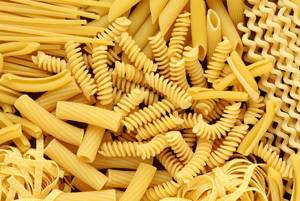
Nutrients in Rice Vs. Potatoes | Healthy eating
Maya Appleby Updated November 27, 2021
In the United States, a typical meal contains a source of protein, a vegetable dish, and a high-carbohydrate side dish, usually rice, potatoes, or pasta. Making it as nutritious as possible means considering the nutrient profile of your food. According to Clemson University, more than 70 percent of white rice sold in the United States is fortified with additional folic acid, thiamine, niacin and iron, making it nutritious enough to compete with potatoes in several areas, but potatoes are more nutrient dense than rice. generally.
Calories, fats and proteins
If you're trying to lose weight by tracking your calorie and fat intake, rice or potatoes may help. Both are nearly fat-free, with less than a gram of fat per serving. They are also similar in calories. A cup of plain white rice has 242 calories, and brown rice has 216. In between, a baked potato has 230 calories. Rice, with 5 grams of protein per cup, has slightly more protein than potatoes with 3 grams.
Fiber
Most of the nutrients are found in the potato, not the skin as many believe, but the skin helps retain nutrients in the potato and increases its fiber content. Brown rice, unmilled with the hulls removed, is a whole grain that contains 4 grams of fiber per cup, while the same serving size of white rice contains only 1 gram of fiber. A medium-sized baked potato gives you about 3 grams of fiber if you eat the skin, and 2 grams if you don't. If you're trying to increase your fiber intake, baked potatoes and brown rice are better options than mashed potatoes and white rice.
Vitamins
A cup of rice provides one-third of the daily recommended value of vitamin B-6, which helps the body produce healthy red blood cells and amino acids. It also gives you 10 percent of your niacin and trace amounts of thiamine and riboflavin and 180 micrograms of folic acid. Potatoes give you half your daily value of vitamin B-6, 45 percent of the vitamin C you need daily, and small amounts of thiamine, riboflavin and folic acid.
Minerals
Because potatoes are grown underground, they offer a rich supply of minerals that exceeds the mineral content of rice. Although rice contains three times more iron than baked potatoes, potatoes contain five times more calcium than a cup of white rice, twice as much phosphorus and 14 times more potassium, rivaling potassium-rich foods such as bananas, spinach and broccoli. Rice and potatoes contain about the same amount of zinc and magnesium per serving.
Glycemic index
The glycemic index of a food is a measure of how likely your blood glucose levels are to rise. A lower glycemic index indicates a safer food for diabetics. This amount varies greatly depending on the type of potato or rice you eat. According to Harvard University Medical Center, medium-sized white potatoes have a glycemic index of 50, and russet potatoes have a glycemic index of 85. White rice and brown rice fall in between these numbers, with glycemic indexes of 64 and 55.
Recommendations
In general, potatoes contain more vitamins and nutrients than rice, but when you add toppings such as butter, sour cream, gravy, bacon bits, and salt, the calories and grams of fat in a baked potato increase significantly. To keep it nutritious, limit your intake these foods and choose lower-calorie, healthier seasonings such as garlic or olive oil. Consider nutrient retention as well. Rice has a longer shelf life than potatoes and retains its nutrients longer after harvest, so choose freshly harvested potatoes whenever possible to maximize their nutritional content.
.
How many calories are in potatoes?
Potatoes contain a lot of carbohydrates, so you may be wary of eating them. But they also have a lot of good stuff, like vitamin C, cancer-fighting antioxidants, potassium for heart health, and a good amount of protein. Potatoes in your diet help lower blood pressure, store cells, and keep your brain functioning optimally. Those who are worried about their weight should know how many calories are in potatoes.
How many calories are in potatoes?
The following tables will help you plan how to include potatoes in your diet:
| 1 regular potato | |||
| calories | Carbohydrates | Sugar | |
| 100 g | 77 | 17 grams | 0.8 grams |
| 1 Small (170 grams) | 130 | 30 grams | 1.3 grams |
| 1 Medium (213 grams) | 163 | 37 grams | 1.7 grams |
| 1 Large (369 grams) | 283 | 64 grams | 2.4 grams |
| 1 regular potato, baked | |||
| calories | Carbohydrates | Sugar | |
| 100 g | 93 | 21 grams | 1.2 grams |
| 1 Small (138 grams) | 129 | 29 grams | 1.6 grams |
| 1 Medium (173 grams) | 161 | 37 grams | 2 grams |
| 1 Large (299 grams) | 279 | 63 grams | 3.5 grams |
| 1 regular potato, boiled or steamed | |||
| calories | Carbohydrates | Sugar | |
| 100 g | 87 | 20 grams | 0.9 grams |
| 1 regular potato, mashed with margarine | |||
| calories | Carbohydrates | Sugar | |
| 100 g | 116 | 16 grams | 1.7 grams |
| 1 regular potato, microwaved | |||
| calories | Carbohydrates | Sugar | |
| 100 g | 105 | 24 grams | 2.4 grams |
| 1 red potato | |||
| calories | Carbohydrates | Sugar | |
| 100 g | 71 | 16 grams | 1.3 grams |
| 1 Small (170 grams) | 120 | 27 grams | 2.2 grams |
| 1 Medium (213 grams) | 150 | 34 grams | 2.8 grams |
| 1 Large (369 grams) | 260 | 59 grams | 4.8 grams |
| 1 White potato | |||
| calories | Carbohydrates | Sugar | |
| 100 g | 69 | 16 grams | 1.2 grams |
| 1 Small (92 grams) | 63 | 14 grams | 1.1 grams |
| 1 Medium (213 grams) | 147 | 33 grams | 2.4 grams |
| 1 Large (369 grams) | 254 | 58 grams | 4.2 grams |
| 1 White potato, baked | |||
| calories | Carbohydrates | Sugar | |
| 100 g | 94 | 21 grams | 1.5 grams |
| 1 russet potato | |||
| calories | Carbohydrates | Sugar | |
| 100 g | 79 | 18 grams | 0.6 grams |
| 1 Small (170 grams) | 135 | 31 grams | 1 gram |
| 1 Medium (213 grams) | 169 | 38 grams | 1.3 grams |
| 1 Large (293 grams) | 293 | 67 grams | 2.3 grams |
Delicious potato recipes
These delicious recipes will help you get more potatoes into your diet.
Low-calorie cheese and potato soup
This video is a great example of potato soup that will fill you up without filling you with empty calories:
.
Contraindications for use
Despite their advantages, pasta and rice have some disadvantages. It is known that for people on a weight loss diet, pasta should be consumed with caution . This product also contains gluten , which causes allergies in many. Soft varieties of pasta have a large amount of sugar, so they are contraindicated for people with diabetes, heart disease, kidney disease or liver disease. Pregnant women, young children and the elderly should consume pasta with caution.
Rice should also be eaten in moderation , since a large amount of food eaten can lead to constipation and the formation of kidney stones. It is believed that men are not recommended to eat a lot of rice, as it will reduce sexual activity. Rice porridge is contraindicated for obese people. Rice cereal contains a large amount of starch, which is harmful for diabetics. Rice also has very little sodium, which is necessary to maintain water-salt balance in the body. Therefore, during the rice diet, you need to drink a lot of water or other liquid.





